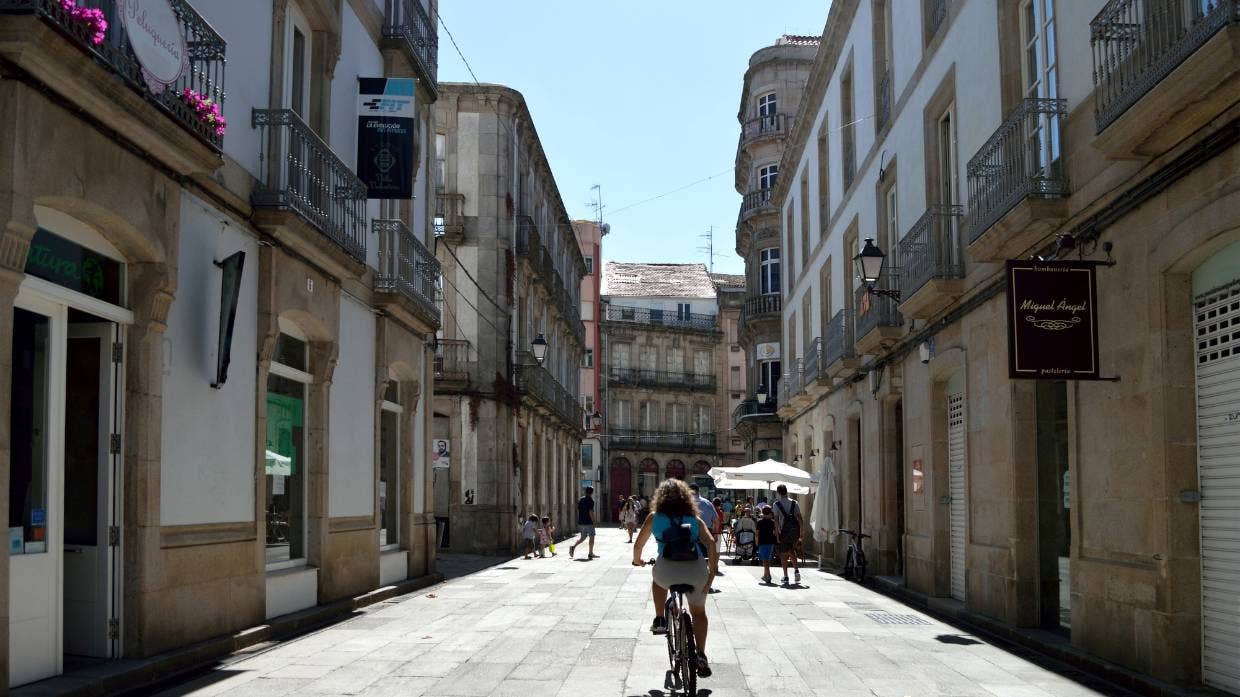Pontevedra the town for walkers
In Pontevedra, a city in north-western Spain that sits just above Portugal, you can walk from one side of the city centre to the other without encountering a car.

Pontevedra
In the 20-plus years since the streets of the old town centre, which date back to medieval times, became off limits to cars, the quality of life has blossomed for the 83,000 residents who now call Pontevedra home:
The historic downtown, once paralysed by traffic, now rings with the sounds of voices and bicycle bells. It takes about 25 minutes to walk across a city centre almost exactly the same size as Wellington’s.
Plus, it is healthier and safer to live in Pontevedra.
A total of 30 people died in traffic accidents on the city’s streets between 1996 and 2006. There were three deaths the following three years, but no-one has died in a traffic accident since 2009,
Now, carbon dioxide emissions are down 67% – half a ton per person – and nearly three-quarters of journeys which would have been made by car are now made on foot or by bike.
People are voting with their feet: While other towns in the region are shrinking, central Pontevedra has gained 12,000 residents in that time.
The pedestrianisation of Pontevedra was the brain child of Miguel Anxo Fernández Lores, who became the city’s mayor since 1999 and has since been re-elected four times.
“Before I became mayor 14,000 cars passed along this street every day,” he told the Guardian. Some 27,000 cars passed through the centre of the old city each day.
“The historical centre was dead,” he said. “There were a lot of drugs, it was full of cars – it was a marginal zone. It was a city in decline, polluted, and there were a lot of traffic accidents. It was stagnant. Most people who had a chance to leave did so.”
Within a month of his election in 1999, Lores’ council had paved and pedestrianised all 300,000 square metres of the medieval centre, and got rid of street parking.
His team tried and failed to come up with a workable plan to improve traffic conditions. Instead, they removed it entirely.
Underground car parks replaced on-street ones, with others on the periphery of the city. They got rid of traffic lights in favour of roundabouts, and reduced the speed limit in the outer zones to 30 kilometres per hour. Transport and courier services now followed a designated timetable to deliver goods within the pedestrianised zone.
They also put a lot of effort into making the city more friendly for walking. Footpaths and streets became one, doubling the amount of space available for pedestrians. Benches were installed, lighting was improved.
But it wasn’t just about engineering and planning. It was also about political leadership, Lores said.
“To succeed in improving the quality of life in cities, it is enough to have the will and political courage,” he said, according to Smart Cities Drive.
